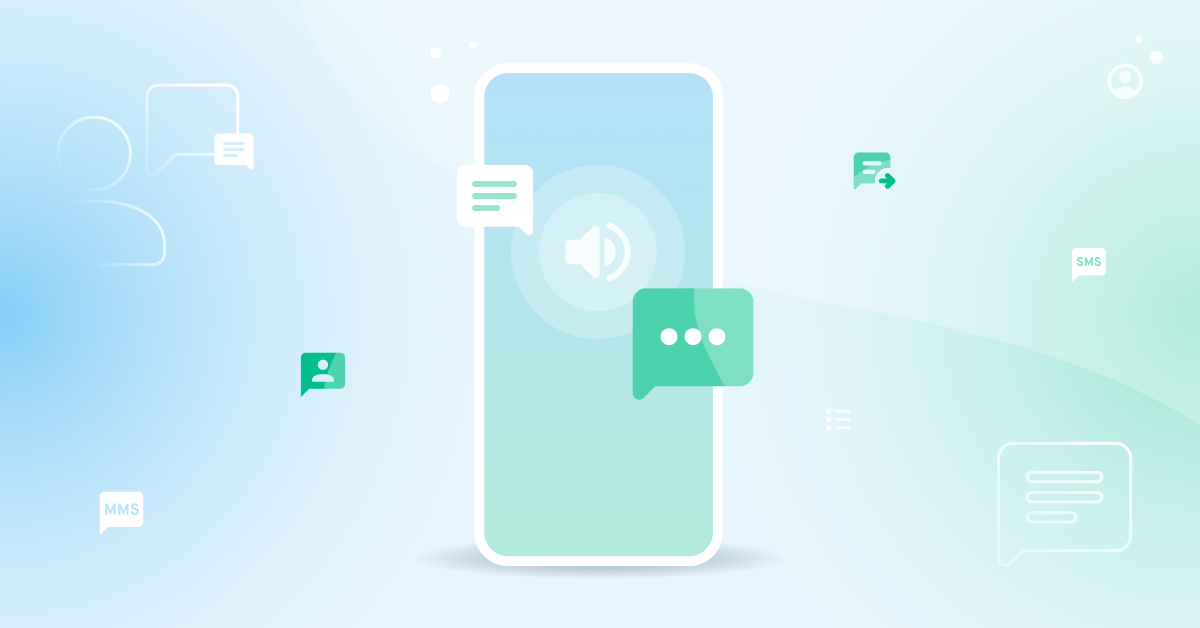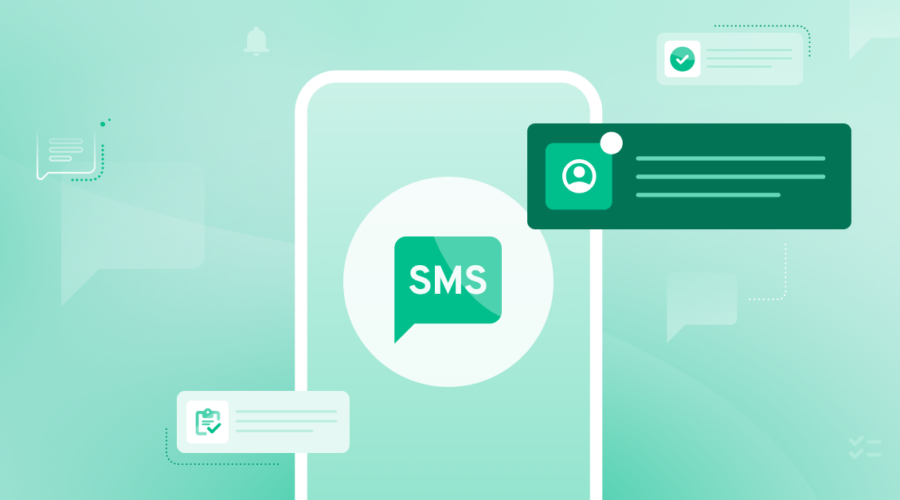On November 16th, 2023 Apple announced that Rich Communication Services (RCS) support will come to the iPhone and will work alongside the company’s iMessage system, finally easing the green vs. blue text bubble divide.
This announcement sent a shockwave around the world, as Apple’s standoff with RCS has been long (and public). Tim Cook had been very vocal as he claimed he wasn’t planning to end the “green bubble” phenomenon anytime soon.
“I don’t hear our users asking that we put a lot of energy in on that at this point,” Cook said when asked how Apple founder Steve Jobs would feel about using the RCS standard in iMessage during Vox Media’s 2022 Code. Cook’s response? “I would love to convert you to an iPhone.”
Until this announcement, messaging has long been divided between Apple and non-Apple users. But how did messaging get here—and more importantly, what do these changes mean for businesses and consumers?
What is RCS messaging?
RCS messaging is a combination of all the texting features you know and love—SMS, MMS, iMessage, Facebook Messenger, WhatsApp, and more—to create a new standard that combines those services into a single, native experience that you can use on your existing mobile messaging client.
Think of RCS as an improved messaging service, like iMessage, that allows users to:
- Share higher-resolution photos and videos between their devices (up to 100MB)
- Signal when texts have been read
- Show typing indicators when responding to texts
- Send emojis and GIFs
- Enjoy the above features within group messaging contexts
The history of RCS: From Jibe to Google
You can’t talk about or appreciate the history of RCS without starting with SMS and MMS first.
In 1982, SMS was born as a way to send texts via the same signaling system that controlled voice traffic. Then as cell phones added the ability to take photos, record audio, and even capture videos, people wanted to share those too. In 2002, MMS was introduced commercially as a way to share these files.
And for decades, no real universal innovation has happened with SMS or MMS—even though in 2022 alone, Americans exchanged 2.1 trillion text messages.
That is until in 2007 a group of industry professionals formed The Rich Communication Suite initiative to talk about how to get more from their messaging. In February 2008, the GSM Association (GSMA) officially became the home for the RCS initiative, and an RCS steering committee was established, officially announced as Rich Communications Suite on September 15th, 2008.
In September 2015, Google acquired Jibe Mobile, the leading provider of RCS services and a company that worked closely to help carriers easily deploy RCS to their users. After acquiring Jibe, Google began to push RCS as the de-facto messaging standard–aiming to replace SMS once and for all. Because of this acquisition, Google was uniquely positioned to champion RCS.
In 2016, the GSMA released the ‘Universal Profile’ which defines a fully interoperable standard for advanced communications, which networks can implement to handle RCS messages.
Historical challenges around RCS messaging
The elephant (or Apple) in the room? Texting Android users from Apple’s iPhone has always been a source of mild conflict. Said quickly, that’s because of the previously mentioned green vs. blue bubble divide.
Until now, U.S. (and some global) businesses have been slow to adopt RCS because of its incompatibility with iOS. Apple has famously shunned RCS for years in favor of its own messaging service, iMessage. Even though Apple didn’t adopt RCS, it’s been available through major U.S. carriers since 2019, and through global carriers since 2022.
During this time, SMS and MMS have remained the connective thread between iOS and Android users, and thus the most accessible channel for businesses targeting both Android and iOS message recipients.
What Apple’s iOS RCS announcement means for consumers & businesses
User interconnectivity is a great thing, and this represents an exciting new opportunity for all customers in the messaging space! Apple’s spokesperson shared in a statement, “We believe RCS Universal Profile will offer a better interoperability experience when compared to SMS or MMS.”
By reversing its stance on RCS, Apple can also open its user base up to a new, shared channel with Android users. Apple has a worldwide market share of 29.14%, compared to Android’s 70.16% (as of December 4, 2023).
There’s still a bit of debate on what, exactly, Apple will support within the RCS Universal Profile.
The bottom line? iMessage isn’t going anywhere and will continue to be the messaging platform used for all communication between iPhone users. Rather, Apple is simply adopting RCS in addition to its favored messaging application.
But, the writing seems to be on the wall—the original mission for RCS looks to be in hand. RCS Messaging looks to finally be well-positioned to replace SMS and MMS and exist separately from iMessage when it’s available. There is no reason to believe that we’ll see an end to the Green vs. Blue branding of messages on iOS. What we can expect is an overall improved messaging experience across mobile platforms.
However, we suspect Apple will prioritize Person-to-Person (P2P) messaging functionality first, and focus on Application-to-Person (A2P) messaging later.
Apple tends to release updates to its beloved iOS in the latter part of each year, most recently unveiling iOS 17 in September 2023 (which has a 32% adoption rate in the U.S. among iPhones at the time of writing). We anticipate that Apple’s RCS roadmap and ultimate unveiling will coincide with the assumed iOS 18 release later in 2024.
As more details come out, our customers will stay in the know about what this means for them and their business.




